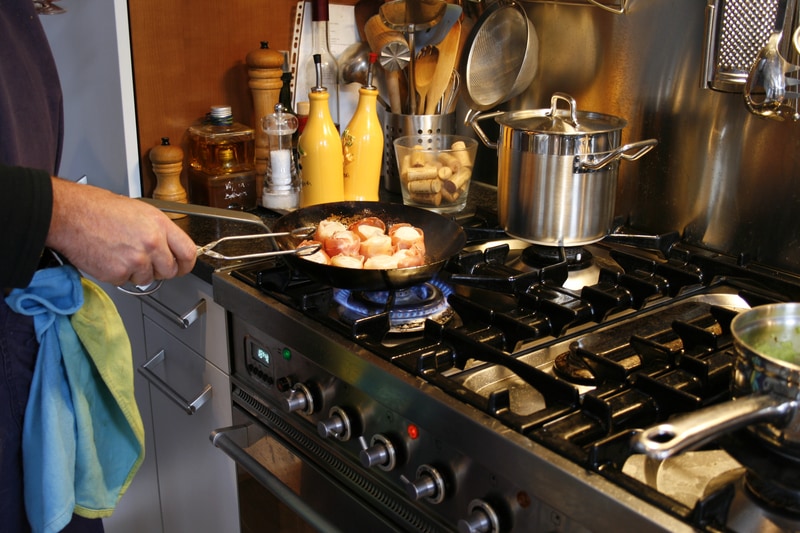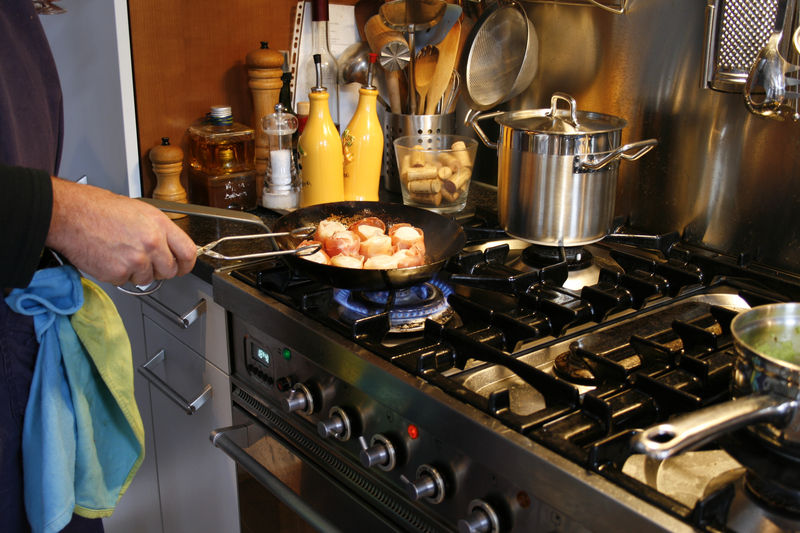Have you ever marvelled at the efficiency and control that top chefs seem to wield in their kitchens, particularly when using a gas stove? The truth is, cooking with a gas stove offers a level of precision that is hard to match with other types of cooktops.
Whether you're a seasoned cook or a novice in the kitchen, understanding the nuances of cooking with a gas stove can significantly enhance the quality of your dishes.
In this guide, we'll share ten invaluable tips to help you master the art of cooking with a gas stove, ensuring every meal you prepare is nothing short of spectacular.
Top Tips For Perfection
Cooking with a gas stove isn't just about turning knobs and lighting flames. It's an art that blends intuition with skill. Here’s what you need to know.
1. Understanding Your Flame
One of the foundational skills in cooking with a gas stove involves getting to know your flame. The flame's colour and size directly affect the heat your cookware receives. Ideally, the flame should gently lick the base of your pan without climbing up the sides. This ensures even heating and prevents the handles from getting hot, saving energy. Adjusting the flame to suit what you're cooking — higher for boiling or searing, lower for simmering — is a skill that will greatly enhance your cooking efficiency.
2. The Right Cookware is Key
Not every pot or pan in your kitchen will be suited to the direct heat of a gas burner. Flat-bottomed cookware ensures maximum contact with the flame, promoting even cooking. Materials matter too: cast iron and thick-bottomed stainless steel pans are excellent for their heat distribution properties. They absorb and distribute heat evenly, reducing hot spots that can cause food to cook unevenly or stick.
3. Mastering the Art of Heat Management
Heat management is crucial when cooking with a gas stove. The ability to change the heat level instantly — from a rolling boil to a gentle simmer — can make all the difference in your dishes. Start with a high flame to get a good sear on meats or to quickly bring water to a boil. Then, lower the heat to cook through or simmer. This technique is essential for developing complex flavours and textures in your dishes.
4. Keep it Clean
What to avoid when using a gas stove? Letting spills and crumbs accumulate. Not only does this create a more challenging cleaning job later, but it can also pose a fire risk. Regular cleaning prevents the buildup of grease and food particles, which can catch fire. Keeping your stove clean also ensures it works efficiently, helping you achieve the best results in your cooking.
5. Safeguarding Your Surroundings
Knowing how to cook safely on a gas stove is paramount. This means being vigilant about keeping flammable materials — like kitchen towels, paper, or loose clothing — away from the open flame. Ensure that your cooking area is well-ventilated to avoid the buildup of harmful fumes. Also, having a fire extinguisher within easy reach is a good kitchen safety practice.
6. Optimise Cooking Times
Gas stoves offer unparalleled control over cooking temperatures, allowing you to adjust the heat as needed quickly. Larger burners heat up faster and are ideal for boiling water or cooking large dishes, while smaller burners are perfect for simmering or preparing smaller meals. Learning which burner to use for specific tasks can help optimise your cooking times and save energy.
7. Experiment with Different Cooking Techniques
The versatility of a gas stove lends itself to a wide range of cooking techniques. Whether you're stir-frying vegetables over a high flame or gently simmering a bolognese sauce, the direct heat control allows you to adjust the temperature to suit the method. Experimenting with different techniques will not only improve your culinary skills but also expand your repertoire of dishes.
8. The Importance of Ventilation
Proper ventilation is a must when cooking, especially on a gas stove. Good airflow helps to dissipate heat and cooking odours, making for a more comfortable cooking environment. More importantly, it ensures the safe dispersal of combustion gases, keeping the air in your kitchen clean and safe to breathe.
9. Embrace the Power of Preheating
Preheating your pans can significantly improve the quality of your cooking. A hot pan ensures that food begins cooking immediately upon contact, sealing in juices and creating a delicious crust. Whether you're sautéing vegetables or searing meat, preheating your cookware on a gas stove allows for precise temperature control, ensuring your dishes cook evenly and turn out as intended.
10. Practice Makes Perfect
Finally, the best way to master cooking with a gas stove is through practice. Familiarise yourself with the way different foods react to direct flame and how adjustments in the flame affect cooking times and outcomes. With patience and experimentation, you'll develop a sense of how to best utilise your gas stove, turning out meals that delight and impress.
Cooking With Beko
Cooking with a gas stove offers unparalleled control and flexibility, making it a favourite among culinary professionals and home cooks alike.
By embracing these tips, you can enhance your cooking skills, ensuring each dish you prepare is both delicious and safely made. And if you're in the market for a new gas stove, consider a gas stove from Beko.
With advanced features designed to make cooking a breeze, Beko products are the perfect companion for anyone looking to master the art of cooking with a gas stove. Happy cooking!



